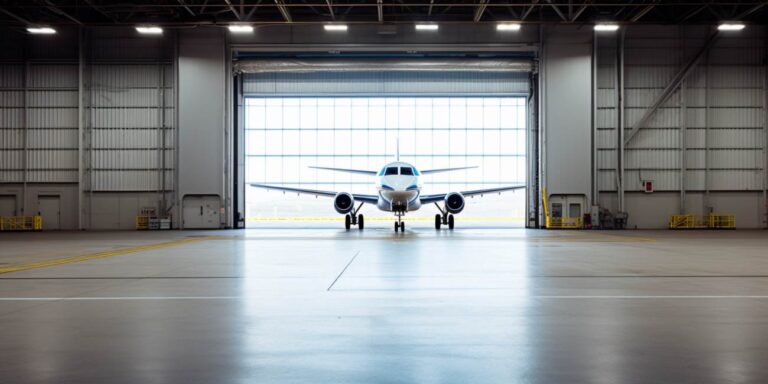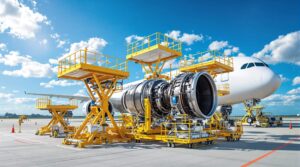The frequency of door inspections hinges on several factors, primarily the type of hangar door in use and the prevailing environmental conditions. For hangars with rolling doors, a bi-annual inspection schedule is generally recommended. These assessments should encompass a comprehensive evaluation of the door’s mechanical components, including tracks, rollers, and hinges. Lubrication of moving parts is a pivotal task that should not be overlooked during these bi-annual checks.
On the other hand, hangars equipped with sliding doors necessitate a more frequent quarterly inspection regimen. The nature of sliding doors exposes them to additional wear and tear, requiring a proactive approach to maintenance. Facility managers should scrutinize the door’s alignment, ensuring it glides smoothly along its tracks. Additionally, assessing the integrity of the guide systems is imperative to prevent operational glitches.
For hangars located in regions prone to extreme weather conditions, an additional layer of vigilance is imperative. Annual inspections should be augmented with pre-season checks, especially before the onset of harsh weather. This proactive approach aids in identifying and rectifying any potential issues that may arise due to temperature fluctuations, high winds, or heavy precipitation.
Moreover, a comprehensive preventive maintenance program is indispensable for prolonging the lifespan of hangar doors. This entails regular cleaning to remove debris and applying protective coatings to shield against corrosion. Integrating this routine into the overall inspection schedule fortifies the door’s resilience and ensures sustained operational excellence.
Proper inspection intervals for aircraft hangar doors
Aircraft hangar doors play a critical role in ensuring the safety and functionality of aviation facilities. Proper inspection intervals are essential to guarantee the longevity and reliable performance of these doors, preventing unexpected failures and operational disruptions.
The frequency of inspections for aircraft hangar doors depends on several factors, including the door type, usage intensity, and the prevailing environmental conditions. For routine inspections, a general guideline is to conduct them at least twice a year. However, in high-traffic or harsh environments, more frequent inspections may be necessary.
One of the key aspects to focus on during inspections is the structural integrity of the hangar door. Check for any signs of corrosion, wear and tear, or misalignment. Addressing these issues promptly is crucial to prevent further damage and ensure the continued smooth operation of the door.
During the inspection, pay special attention to the door seals. Proper seals are essential for maintaining the hangar’s temperature control and protecting the aircraft and equipment inside. Replace any damaged or worn-out seals promptly to avoid energy losses and potential damage to the aircraft.
Electrical components of the hangar door system also require regular checks. Inspect the wiring, control panels, and sensors for any signs of malfunction or damage. Ensure that the emergency systems are in proper working order, providing a failsafe mechanism in case of power outages or other emergencies.
Another critical aspect of hangar door inspections is the examination of the lifting mechanisms. Whether the door operates through hydraulic systems, counterweights, or other mechanisms, ensure that they are functioning smoothly. Lubricate moving parts as needed to reduce friction and prevent premature wear.
Consider creating a comprehensive inspection checklist tailored to the specific type of hangar door in use. This checklist should include all the crucial components and systems that need examination. Regularly update the checklist based on the manufacturer’s recommendations and any past issues encountered during inspections.
Recordkeeping is an often overlooked but vital aspect of hangar door maintenance. Maintain detailed records of each inspection, including the date, findings, and any corrective actions taken. This documentation not only serves as a reference for future inspections but also aids in identifying any recurring issues that may require a more thorough investigation.
Ultimately, the proper inspection intervals for aircraft hangar doors are essential for ensuring the safety, reliability, and efficiency of aviation operations. By staying proactive in maintenance and addressing issues promptly, hangar operators can minimize downtime and extend the lifespan of their hangar doors.
Necessary aircraft hangar door components to inspect
Aircraft hangar doors are critical components in ensuring the safety and functionality of aviation facilities. Regular inspections of these doors are paramount to identify potential issues and prevent operational disruptions. Let’s delve into the key components that demand meticulous scrutiny during these inspections: hinges, seals, panels, cables, motors, and sensors.
Hinges play a pivotal role in the smooth operation of hangar doors. These mechanical joints facilitate the movement of the doors, allowing them to pivot and open or close seamlessly. During inspections, check for signs of wear, corrosion, or misalignment in the hinges. Lubrication should be regular to ensure optimal performance and longevity.
Next on the inspection checklist are the seals, crucial for maintaining the hangar’s internal climate and protecting aircraft from external elements. Inspect the rubber or inflatable seals for any cracks, tears, or deformation. Damaged seals compromise the insulation, potentially leading to energy loss and increased maintenance costs.
The integrity of panels is another critical aspect. These large, often motorized, sections contribute to the overall strength and security of the hangar door. Inspect panels for dents, rust, or structural damage. Proper alignment ensures that the door closes tightly, maintaining security and weather resistance.
Cables are essential components that contribute to the controlled movement of hangar doors. Inspect these tensioned elements for any signs of fraying, corrosion, or weakened sections. A thorough examination of the cables ensures the continued safe and reliable operation of the hangar doors.
When it comes to hangar door operation, motors are the driving force. Regularly check motors for unusual noises, vibrations, or signs of overheating. Proper lubrication and timely maintenance enhance the longevity of motors and prevent unexpected failures that could disrupt hangar operations.
Lastly, sensors play a crucial role in ensuring the safety of both people and aircraft. Inspect photoelectric or infrared sensors for proper alignment and functionality. Malfunctioning sensors could pose safety risks, leading to accidents during door operation.
Step-by-step guide to inspecting aircraft hangar doors
When it comes to ensuring the optimal functionality of aircraft hangar doors, a comprehensive inspection process is paramount. This step-by-step guide will walk you through the crucial elements of this process, including visual inspection, operational tests, measurement, and lubrication.
Visual inspection serves as the initial checkpoint in assessing the condition of the hangar doors. Begin by carefully examining the entire surface for any signs of wear, corrosion, or damage. Inspect the hinges, rollers, and tracks, ensuring there are no loose components or misalignments. Visual inspection is an essential foundation for identifying potential issues that may affect the doors’ performance.
Following the visual inspection, proceed to conduct operational tests to evaluate the doors’ functionality. Open and close the doors several times to observe their movement. Listen for any unusual sounds, as these could indicate mechanical problems. Additionally, pay attention to the speed and smoothness of the operation. Operational tests provide valuable insights into the overall health of the hangar doors and help preemptively address emerging issues.
Accurate measurement is a crucial aspect of hangar door inspection. Utilize appropriate tools to measure the dimensions of the doors, including width, height, and thickness. Confirm that the measurements align with the specified tolerances and standards. Any deviations may affect the doors’ fit and functionality. Measurement ensures precision and contributes to the long-term reliability of the hangar doors.
Proper lubrication is key to maintaining the smooth operation of hangar doors. Apply a recommended lubricant to all moving parts, such as hinges, rollers, and tracks. This not only reduces friction but also prevents premature wear and tear. Make lubrication a routine part of the maintenance process, ensuring the doors operate seamlessly over an extended period.






